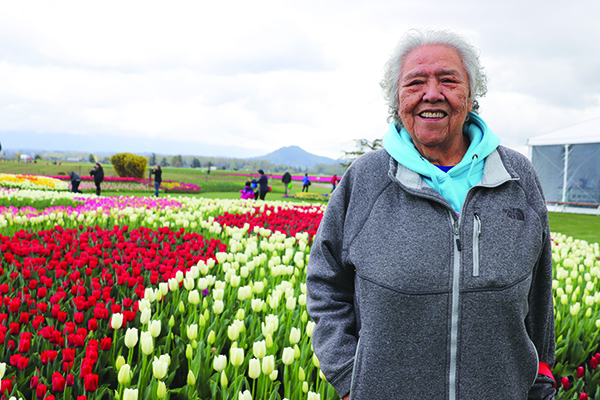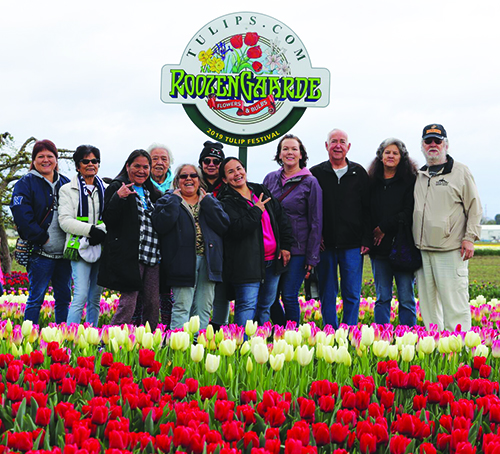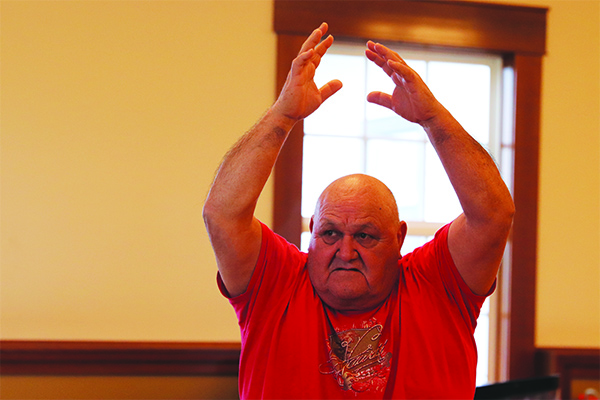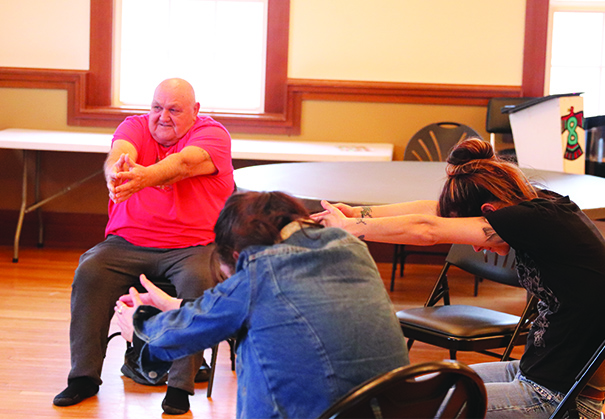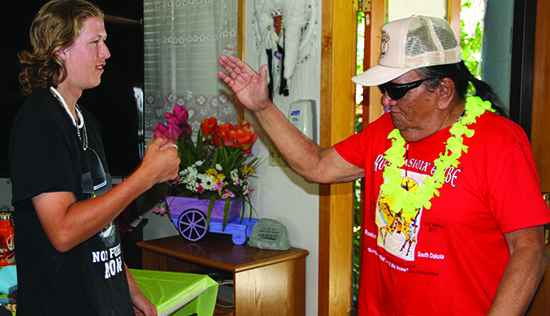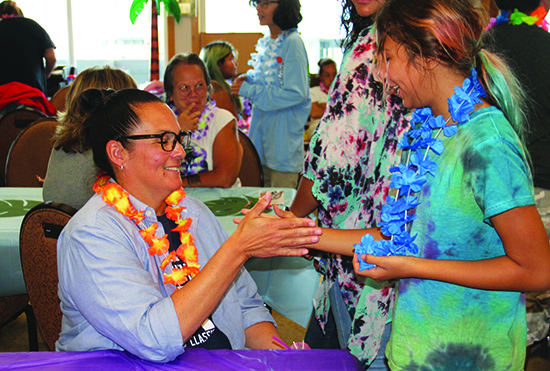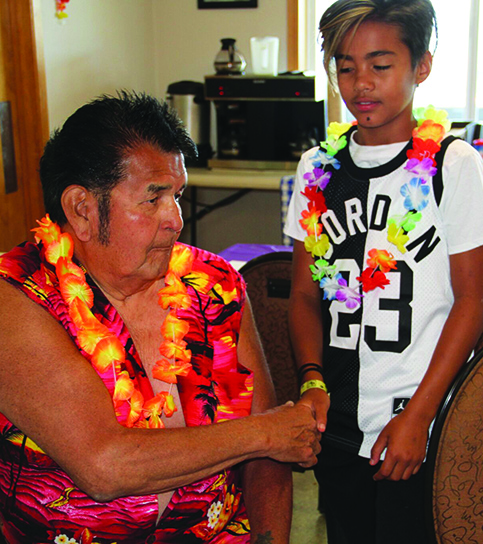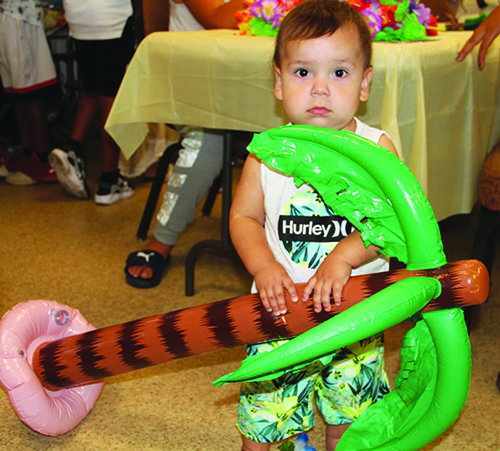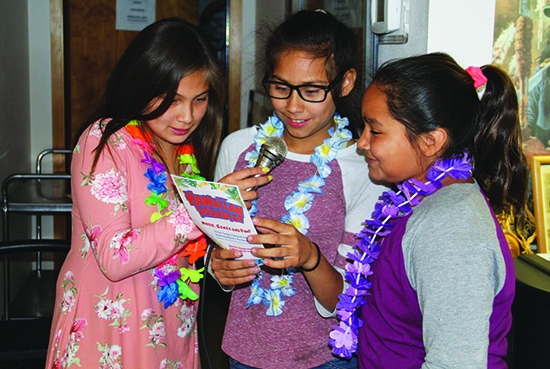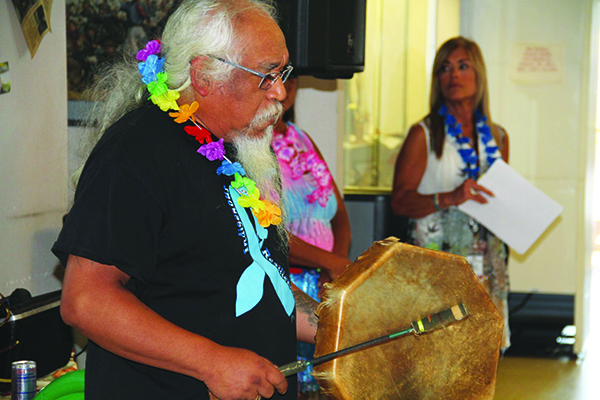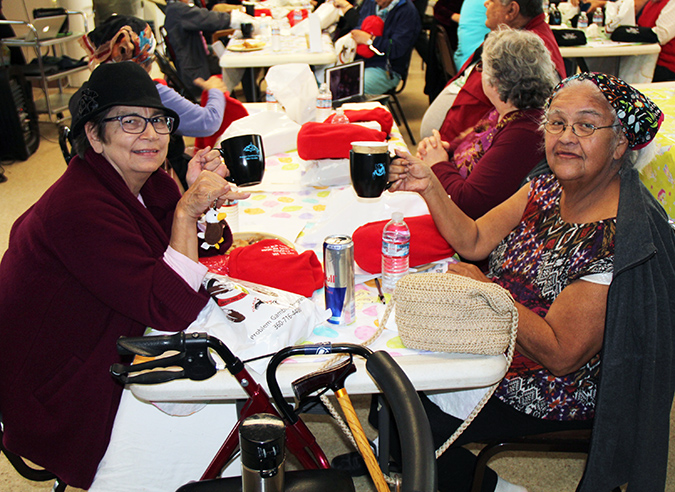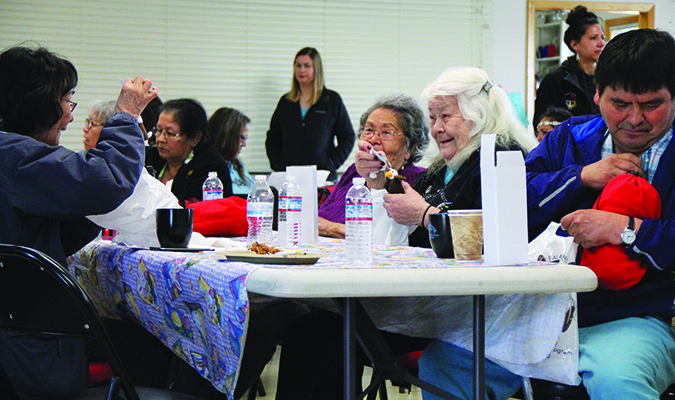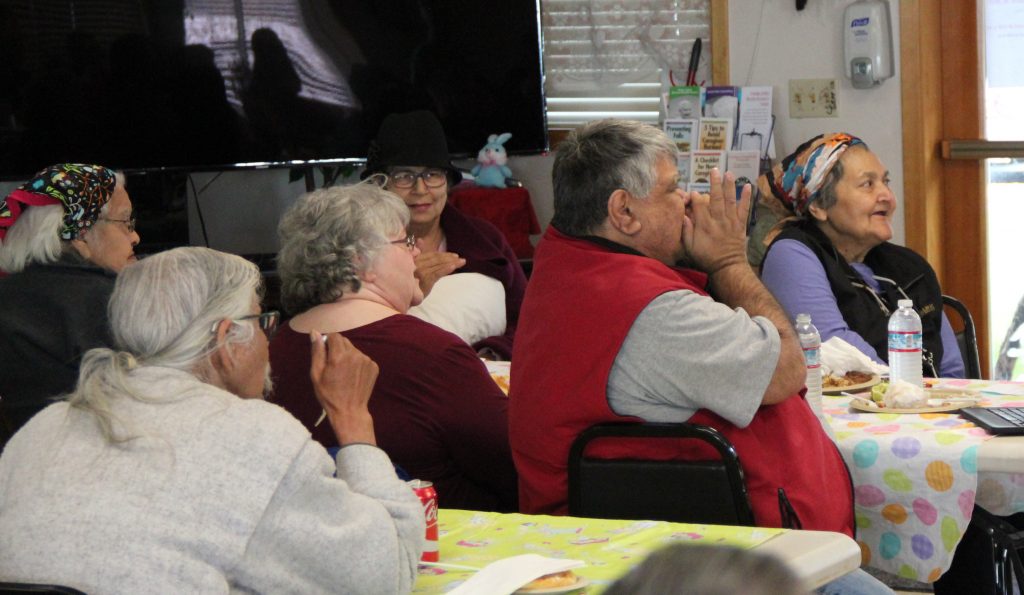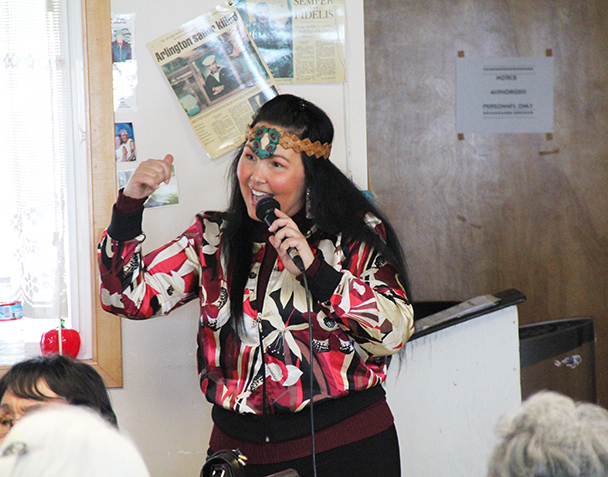By Kalvin Valdillez, Tulalip News
Every April, people travel from around the world to the outskirts of Mount Vernon, Washington to witness thousands of tulips burst into bloom at the Skagit Valley Tulip Festival, officially welcoming the arrival of the spring season. At two featured sites, Roozengaarde and Tulip Town, spectators are treated to a stunning visual experience provided by Mother Earth, and the bulb growers as well.
Since its inception thirty-four years ago, the festival continues to grow in popularity, garnering more and more tulip enthusiasts each year. The tulip festival is in fact Washington State’s biggest festival, attracting over one million participants annually.
This year, the Tulalip Senior Center organized a trip for the local elders of the community to join in on the outdoor fun at the festival and witness the beauty of Mother Nature firsthand. Eleven elders met bright and early at the Tulalip Dining Hall on the morning of April 9, and made the hour-long journey north to Roozengaarde Flowers and Bulbs, a family owned establishment that has been in the tulip growing business for over seventy years.
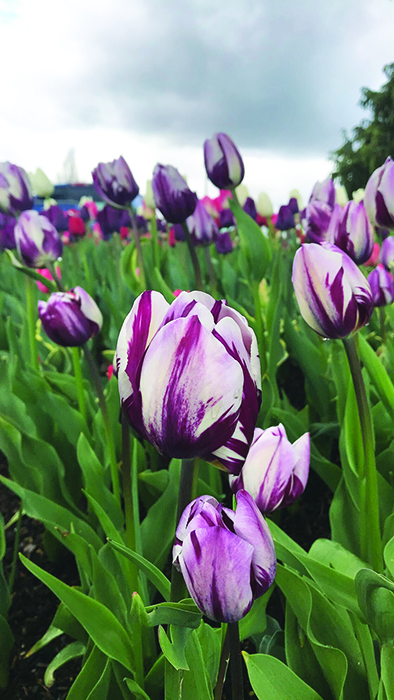 Arriving well before the rush, the seniors had plenty of time to walk about the enormous garden and admire the tulips without feeling overcrowded or pressured to hurry along. Rows and rows of tulips, varying in all different types of vibrant red, pink, yellow, purple and white colors, were just beginning to bloom during the seniors visit, generating a lot of oohs and ahhs as well as several smiles from the elders, as they stooped low to get an up-close look at the flowers.
Arriving well before the rush, the seniors had plenty of time to walk about the enormous garden and admire the tulips without feeling overcrowded or pressured to hurry along. Rows and rows of tulips, varying in all different types of vibrant red, pink, yellow, purple and white colors, were just beginning to bloom during the seniors visit, generating a lot of oohs and ahhs as well as several smiles from the elders, as they stooped low to get an up-close look at the flowers.
The idea was originally presented by Tulalip elder, Barbara Jones, when brainstorming field trip destinations for the seniors. She stated that she thought it would be a great way for the fellow elders of the community to enjoy a springtime activity as well as get some fresh air and ‘to get out and get moving’.
“We thought it was a fun idea to bring the seniors out here today,” explained Jessica Leslie, the Senior Center Manger’s Assistant. “We left at nine this morning to come and walk around the tulip fields. It’s beautiful out here. They’re not fully in bloom yet, but we just wanted to get out and go for a walk. We like to get our seniors out and about to see different things. Some of them don’t drive, so we try to bring them places to do fun stuff like this and get them out of the house to break up the routine a bit.”
The elders broke off into small groups as they made their way through the garden, enjoying company and exploring hundreds of acres of tulips, as well as daffodils, for approximately an hour-and-a-half. The seniors finished their self-led tours just on time as people began to arrive by the carload with their cameras in hand, to capture the gorgeous flowers as they began to open up.
The group also enjoyed a picnic lunch and visited the Roosengaard merchandise shop where they could purchase any of the tulips that were on display to take home and add to their personal garden.
“It finally feels like spring is here,” expressed Tulalip elder, Tina Lyle. “It feels great to be out here, it wakes you up and brings your senses alive and strengthens our connection to the Earth. The tulips are all so beautiful, the blood orange ones are my favorite so far. And to come out here with other Tulalip seniors is special. If you get a chance, you got to come up here and enjoy it and see the tulips in-person for yourself.”
The Skagit Valley Tulip Festival will continue for the duration of April and will feature a variety of events including the annual Tulip Parade. Roozengaarde Flowers and Bulbs is open daily from 9:00 a.m. to 7:00 p.m., while Tulip Town is open from 9:00 a.m. to 5:00 p.m. For directions and more information, please visit www.TulipFestival.org
